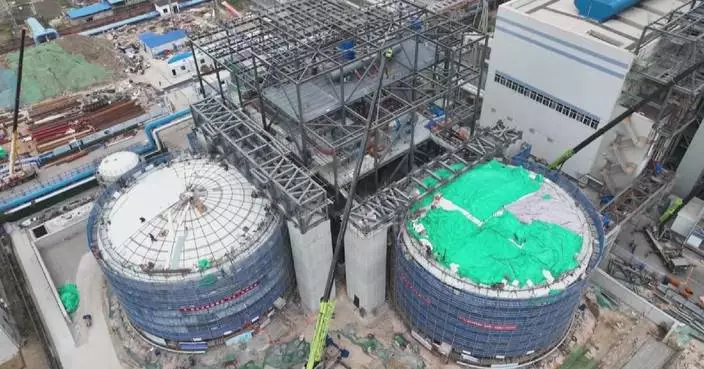Torrential rains have triggered widespread flooding across southern parts of China, prompting urgent relief operations to mitigate the impact and support affected communities.
In central China's Hubei Province, Chongyang County of Xianning City was hit by a three-hour rainstorm of 114 millimeters from the night of Monday to the early morning of Tuesday, causing water to accumulate in many parts of the city and stranding vehicles.
Local departments responded swiftly, rescuing the trapped people and vehicles in a timely manner. The rain has now stopped and the water has begun to recede.
The water level of the Yangtze River section in Hubei's Wuhan on Monday exceeded the warning level of 27.3 meters for the first time since August 2020. Hundreds of residents in affected areas were safely transferred under the joint efforts of multiple departments in the city.
The section of Yangtze River in Nanjing, east China's Jiangsu Province, exceeded 9.5 meters on Tuesday morning, 0.8 meters above the warning level.
Due to the large wind on the river and the fast water flow, the maritime department has taken measures to restrict traffic so as to ensure the safety of water transportation. The Nanjing Maritime Department raised the flood control to a high-level emergency response at 16:00 on Monday, strengthening the emergency force on duty 24 hours a day.
Also in east China, Jiujiang City in Jiangxi Province was hit by continuous heavy rain from Monday to Tuesday, causing urban and rural flooding and necessitating the local emergency evacuation of trapped people.
In the early morning on Tuesday, severe water-logging in some residential areas of Jiujiang City left people trapped, prompting rescue workers to deploy rubber rafts for their safe transfer to dry areas.
In Tongren City in southwest China's Guizhou province, two consecutive days of torrential rain resulted in 140.2 mm of rainfall in Bijiang District and 157.2 mm in Wanshan District, the main urban areas in the city.
The Jinjiang River's precipitous rise in water levels led to urban road flooding and significant traffic disruptions. In response, multiple departments swiftly implemented emergency measures, including traffic control, warning signs, and accelerated drainage efforts. Firefighters utilized rubber rafts to evacuate citizens and students stranded by the flooding.
In Daping Town under the city's Wanshan District, 117 residents were urgently evacuated following the rise in water levels, flooding of homes and falling of trees. To support those displaced, three temporary shelters were promptly established, offering essential living accommodations.

Southern China mobilizes relief efforts after torrential rains, flooding

















































